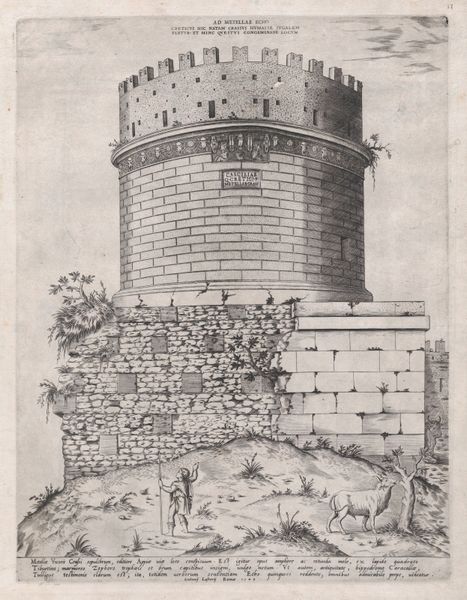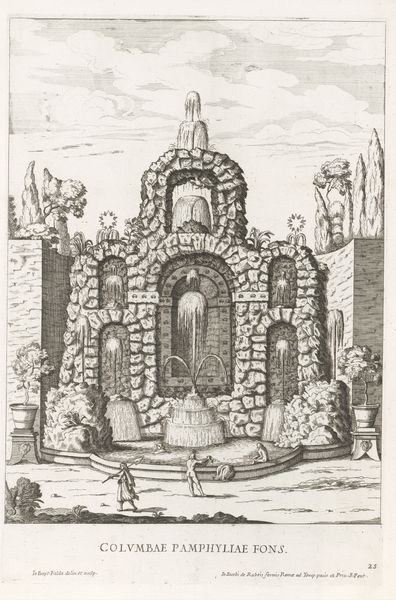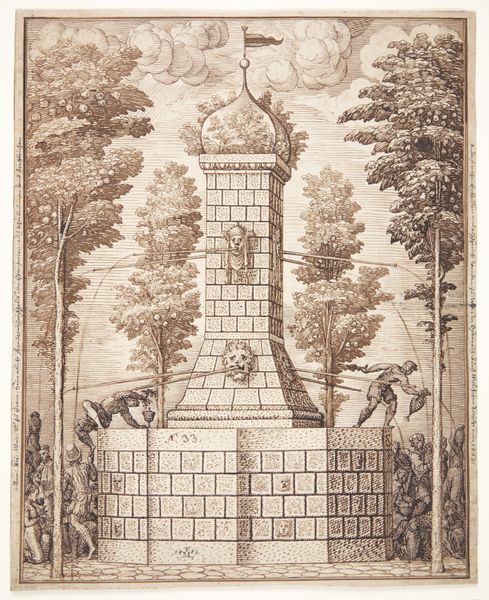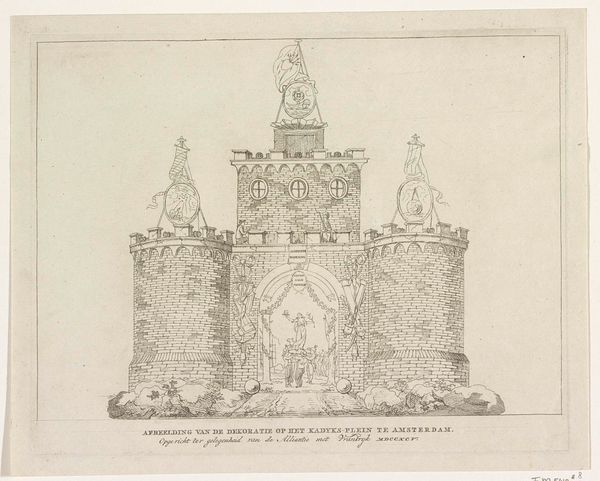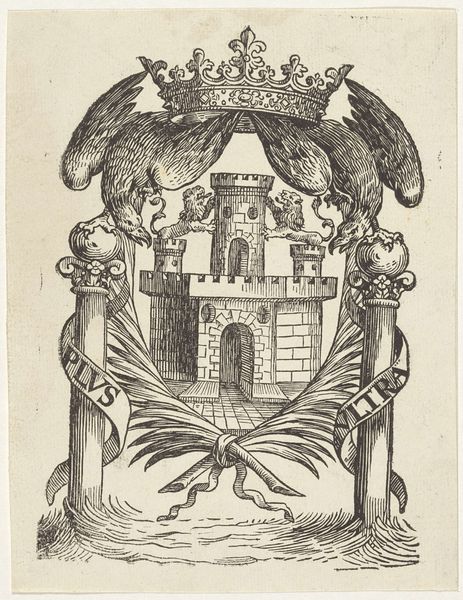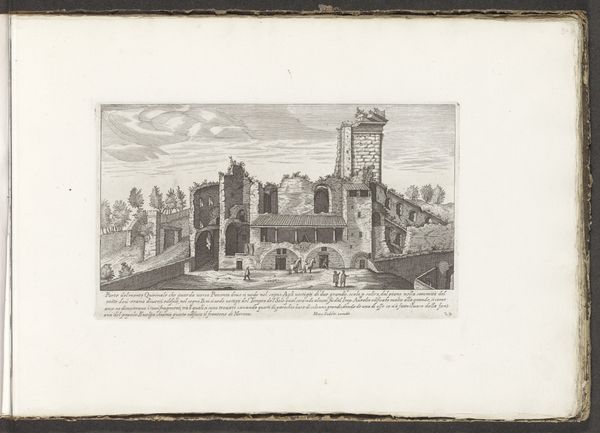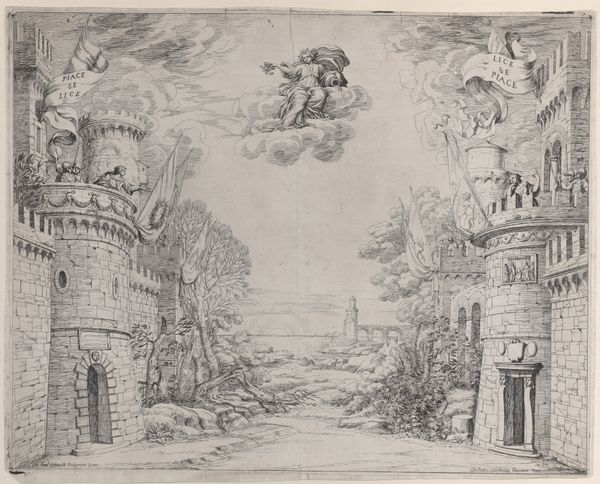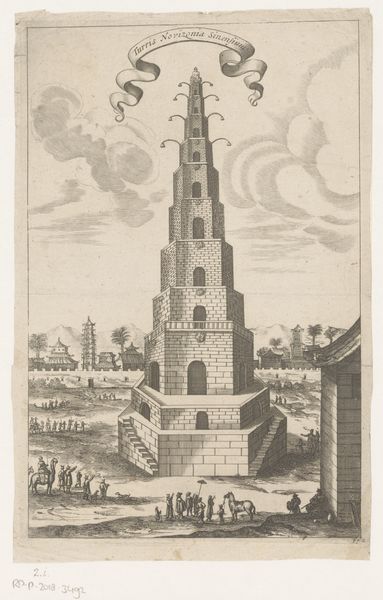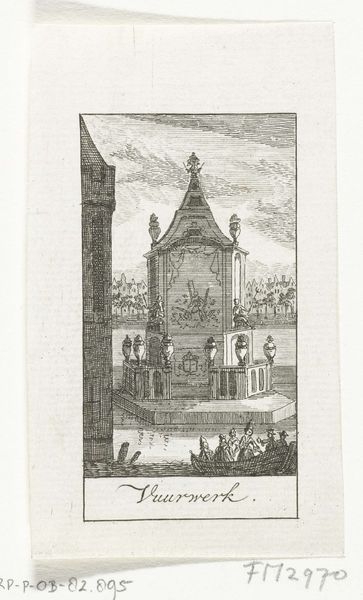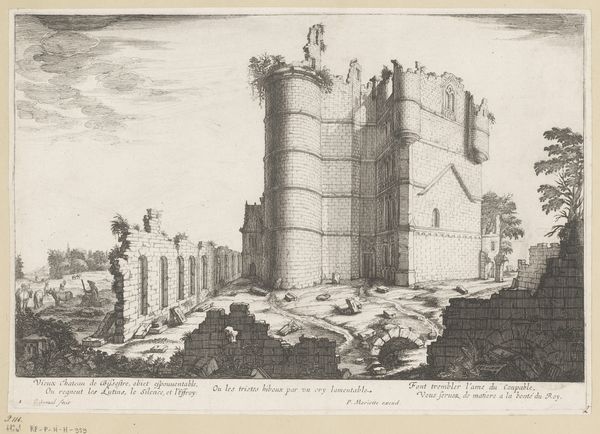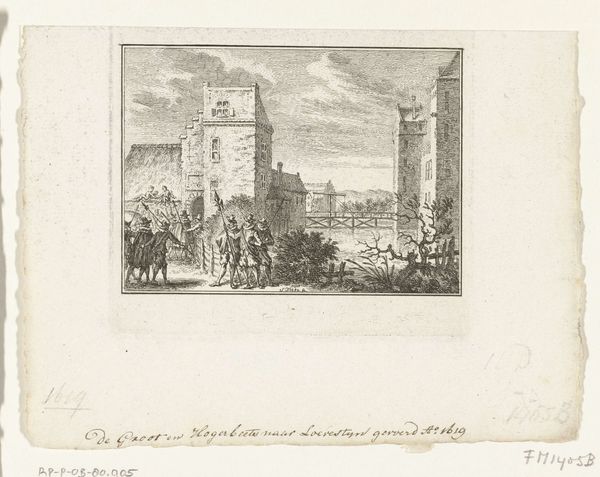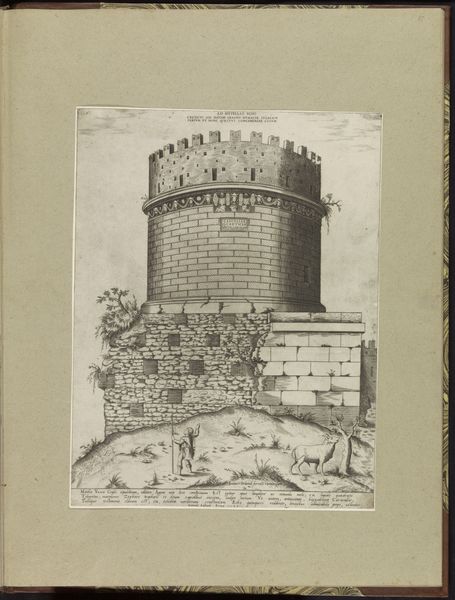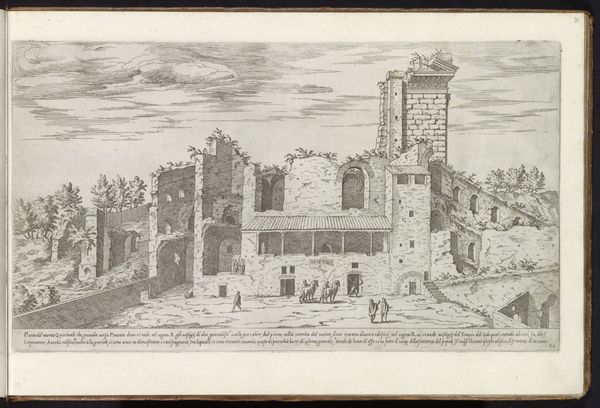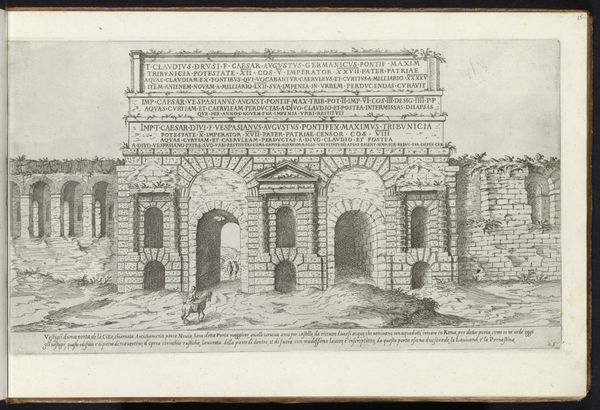
drawing, print, etching, engraving, architecture
#
drawing
#
allegory
#
baroque
# print
#
etching
#
landscape
#
cityscape
#
history-painting
#
engraving
#
architecture
Dimensions: sheet: 7 11/16 x 5 11/16 in. (19.5 x 14.4 cm)
Copyright: Public Domain
Editor: This is Claude Lorrain’s etching, "The Square Tower," created in 1637. The starkness of the lines really emphasizes the architecture, doesn’t it? What strikes you most about its composition? Curator: The geometry is undeniable. Consider how the tower's cubic form asserts itself against the lighter rendering of the sky. The etched lines, so meticulously placed, create a tension between the solidity of the structure and the ethereal quality of the light. Observe also the placement of the statues, their forms acting as counterpoints to the central mass. Editor: Yes, the statues! I'm curious about the visual relationship between those figurative elements and the dominating structure. Is there a purpose for the relationship, or a story told, just in the way they’re posed in relation to each other? Curator: Let us analyze them in the pure terms of form and space. The figures offer a contrasting roundness, their curves playing against the tower’s hard edges. They're positioned not merely as decoration but as compositional anchors, grounding the verticality of the tower within the pictorial plane. Note how their arrangement creates visual pathways for the eye. Do you perceive any significant interplay between light and shadow within this dynamic? Editor: It is true that the light balances well with all those statues. I see that now. Thank you! It’s a testament to how just lines and composition alone create dynamism. Curator: Precisely. It prompts consideration about structure and representation. This etching highlights the inherent language embedded within artistic form, independent of narrative or historical context. It's pure visual syntax.
Comments
No comments
Be the first to comment and join the conversation on the ultimate creative platform.
